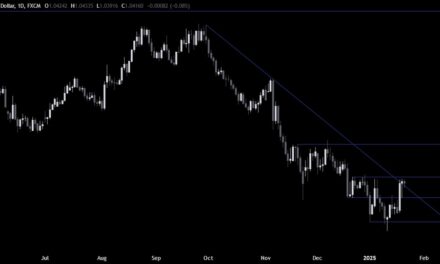The Jackson Hole–driven dollar selling has now been fully unwound against the EURUSD, while much of the broader decline has also been retraced. In the video above, I outline the U.S. session gains and the technical shifts that continue to drive the price action.
Overnight, Australia’s July monthly CPI came in hotter than expected at 2.8% y/y (vs 2.3% expected, 1.9% prior), with prices rising 0.9% m/m (vs 0.2% prior). Goods inflation accelerated to 2.3% y/y from 1.1%, while the trimmed mean core measure surged to 2.7% y/y from 2.1%—a sharp jump that briefly lifted AUDUSD to 0.6503. However, the currency quickly reversed and is now trading near session lows. While the monthly indicator provides an early look at inflation, it is not as comprehensive as the quarterly release. Importantly, August data (due 24 September) will capture more services inflation and comes just ahead of the RBA’s 29–30 September meeting.
Earlier this morning, US Treasury Secretary Bessent said he does not send notes to Governors Waller and Bowman on what actions to take (it was worth an ask I guess). He indicated that he expects to meet with China’s vice-premier in late October or early November, with everything on the table in those trade talks—though delisting Chinese companies has not been considered. On Nvidia, Bessent stated the government does not see a need for financial support, suggesting resources may instead be directed toward sectors such as shipbuilding (hmmmm…. countries could be forced to buy their own navy’s as a way to lower the trade deficit, but what about sneakers and clothing could they not be tariffed if the deficit improves?). He added that it is unclear whether the U.S. should take stakes in defense companies, and noted concerns over Boeing’s emphasis on buybacks rather than R&D, as well as Taiwan and TSMC’s dominance in chips posing a security risk (well they are building a big plant in Arizona – maybe they throw TSMC out and give the plant to Intel /s). He also said timing remains uncertain for any sales of Fannie Mae or Freddie Mac, emphasized the importance of avoiding a wider spread between mortgage and Treasury yields, and reiterated Europe’s unwillingness to support Russia’s secondary tariffs.
In the U.S., MBA mortgage applications slipped 0.5% in the week ending 22 August, following a 1.4% drop previously. The market index eased to 275.8 from 277.1, with refinancings down to 894.1 from 926.1. On the positive side, the purchase index improved to 163.8 from 160.3. The average 30-year fixed mortgage rate edged higher to 6.69% from 6.68%. As usual, this report was not market-moving, with applications continuing to show their inverse correlation to mortgage rates.
The U.S. and Canada calendars are light today, leaving markets focused on price action and earnings. After the close, Nvidia reports results—a release carrying outsized weight given its role as a bellwether for AI and semiconductors. For more context, see Itai’s post on Post-Earnings Announcement Drift (PEAD), which highlights how Nvidia has historically exhibited strong post-earnings trends.
The Lisa Cook mortgage fraud case is escalating, with reports suggesting a lawsuit could be filed as soon as today as Cook fights for her job. In response, Trump signaled he would quickly announce a nominee to replace Cook, with World Bank President David Malpass identified as a potential candidate.
Perhaps more significantly from a Fed’s independence perspective, Bloomberg reports that the administration is considering a review of the 12 regional Federal Reserve Banks. Currently, their presidents—who hold rotational voting rights on Fed policy—are selected internally. Trump wants influence over that process, aiming to install regional presidents aligned with his “cut, cut, cut” policy stance. Such a move would give him far greater sway over the Fed’s direction.
The major US stock indices are trading modestly higher ahead of the U.S. Open at 9:30 AM ET. The futures are implying:
- Dow industrial average +32 points
- NASDAQ index +26 points
- S&P index up +6.81 points
Looking at the US yield curve, yields are higher with a steeper yield curve. The 2 – 30 year spread is up to 128 basis points. That’s the highest level going back to early January 2022.
- 2-year yield 3.649%, +0.5 basis points
- 5 year yield 3.748%, +1.1 basis point
- 10 year yield 4.273%, +1.7 basis points
- 30 year yield 4.935%, +2.8 basis points






